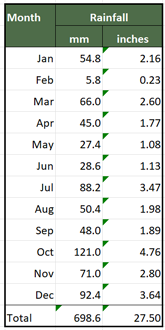Monday brought about a big improvement in the weather, well at least the gale force winds had abated, other than that it wasn't what’s expected in August. We set off to the plot to inspect for any damage from Sunday’s gale. The clouds suggested it might only be a short visit.
The plot seemed to have survived pretty well intact. Our runner beans are still more or less unscathed but with a bit of a lean towards the east. Some of the leaves look a bit battered now after what seems like days of very windy weather.
The biggest casualty of the winds is one of our once statuesque cardoon plants which has been battered into submission.
There was no point in pretending that was possible to rescue this plant by supporting the flowering spikes with stakes they’re far too heavy. The only thing for it was to bring forward its winter pruning. If you look carefully you can see that all the leaves produced by the cardoon are attached to the flowering stems. This means that once the flowering spikes are cut down to ground level nothing of the plant is visible above ground. It’s a bit drastic but I don’t think there was an alternative.
What a difference a few cuts with the loppers makes. The next job is to dig over the ground around the plant to remove as much grass and other weeds as possible. Most years that’s all I do and leave the plant to shoot again from the base. Doing this it will go on to produce another enormous plant again next year.
This year though I'm going to clear out some of the old wood around the base of the plant which will reduce the size of the cardoon for a couple of years before the process needs to be repeated to keep the plant under some sort of control. I'm planning to use weed control fabric around the base to cut down on the weeds but apart from clearing the weeds I'm going to wait until some new shoots are produced before moving on to the next stage of its restoration.
The flower spikes have all been transferred to the compost heap but left so the bees have access to the flowers which they love so much.
Once dried the stems of the cardoons are very sturdy and aren’t that easy to compost so I’m going to keep them in one piece rather than chopping them into bits for composting and test them out as sturdy replacements for bamboo canes next year. If it doesn't work I haven’t lost anything.































An interesting post, I will need to cut down the artichokes once they've finished flowering. I think I left the allotment ones last year. Hopefully they will be bigger next year and produce more buds. I'm impressed with the amount of flower heads you have there. I assume cardoon buds aren't edible. Do you eat the stems, or just grow them ornamentally?
ReplyDeleteWe only grow them ornamentally CJ but you are supposed to be able to eat the young tender stems. I've just cheated and looked on the web where it reckons you can eat the young flowers, stems and roots. Must admit I'm not that desperate. I reckon most of the plant will need braising slowly for a couple of weeks to soften it up a bit.
Delete